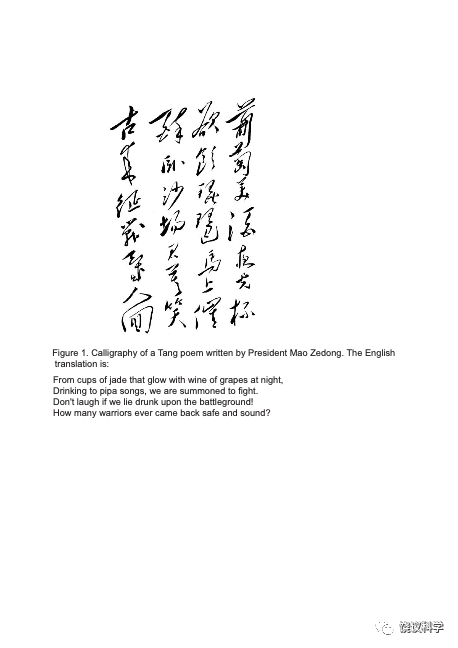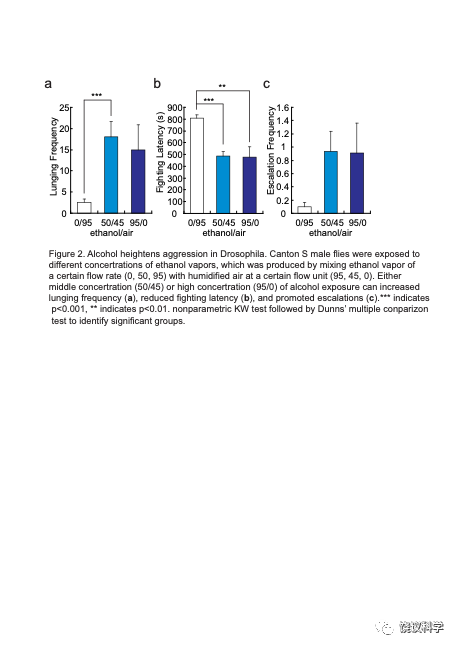周传虽然曾经是我的研究生,但他当时就指导过我。
中国科学院动物研究所研究员周传(1984年3月3日至2022年2月10日)不幸病逝。
2003年,我主持的生物研究生课程(BIO2000)从中国科学院上海生命科学研究院扩展到北大、清华。我讲第一堂课,北大和清华有少数本科生也旁听。
清华念大三的周传和北大同年的王立铭不仅来听课,后来开始联系,讨论科学。
我给周传的第一个建议是,到中国科学院生物物理研究所,跟徐涛学习TIRF技术。而安排王立铭去上海跟研究生蒋辉。
立铭回北京后,我建议周传和立铭检测果蝇是否对磁场有感应。我安排他们跟当时还在生物物理所的唐世明老师学习用果蝇做行为实验。
动物是否有磁感应,是一个长期有争议的科学问题。我的想法是,如果果蝇有磁感应,可以通过遗传学方法筛选相关基因,找到磁感应的机理,之后可能还开发磁感应的分子调控神经细胞活性(现在的说法可称为“磁遗传学”)。之前,国外有过对果蝇磁感应的研究,但很少、无共识。周传和立铭在生物物理所挣扎了一段时间,没有得出明确结论。
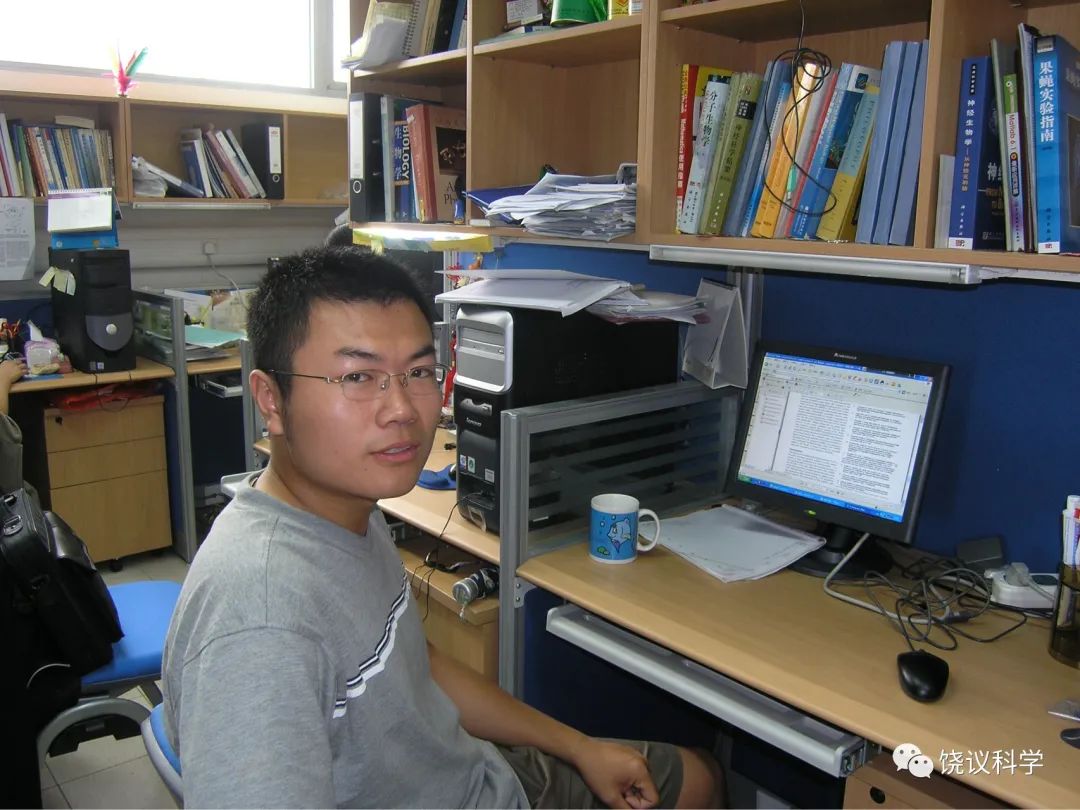
周传在北生所饶实验室
2005年从清华本科毕业后,周传通过生物物理所录取而加入我在北京生命科学研究所建立的实验室。北生所的实验室当时草创。我自己做研究生的六年中有五年(1986-1991)做过果蝇研究,但到2005年已经很长时间没有做果蝇,而且我从来没有建立过果蝇的实验室。我从加拿大请饶勇教授(非亲戚)帮忙,而国内依赖新招的学生。周传和立铭对建立果蝇实验室起了很大作用。还有中国农大的一位学生王路鹏。
我建议他们三人研究能否诱导果蝇产生抑郁症。抑郁症发病率很高,而机理不明确,药物治疗效果有限。如果可以用果蝇建立抑郁症模型,那么就可以利用果蝇的强大遗传学和分子生物学手段,探索抑郁症的分子机理,甚至因此开发治疗抑郁症的新药。他们三人从什么是抑郁症开始,进行了概念和实验的探讨,他们设计了一些行为范式,也做了一些药物和遗传突变操控。但是,我们探索的果蝇抑郁症模型,是否算数,我们信心不足、没有定论。
在这个过程中,周传决定用果蝇做社会行为:打架。他自己先读文献,提出做打架,然后和我讨论这一研究领域的意义,需要回答的问题,以及实验方法。我被他说服了。
我实验室有过果蝇打架的研究,是周传带动建立的。
我在给他的每一封推荐信写明:

我实验室后来有近十年研究的内容之一是社会行为的分子机理,周传的想法是这些研究的起点。而且,社会行为的机理研究有几年是我实验室的主要研究领域。所以,周传等于是指导了我,带动了全实验室。
为了自大,我们有时候称自己研究“分子社会学”。
周传(2008)第一篇论文发表在Nature Neuroscience,只有三位作者,周传后面两位都是老师,所以全部实验都是周传一人做的。周传发现,鱆胺分子对于果蝇的打架很重要,他通过分子生物学操作遗传突变,发现降低果蝇神经递质分子鱆胺可以降低打架,增加鱆胺可以增加打架。通过遗传学操纵,他确定五颗神经元中的鱆胺对于打架重要。
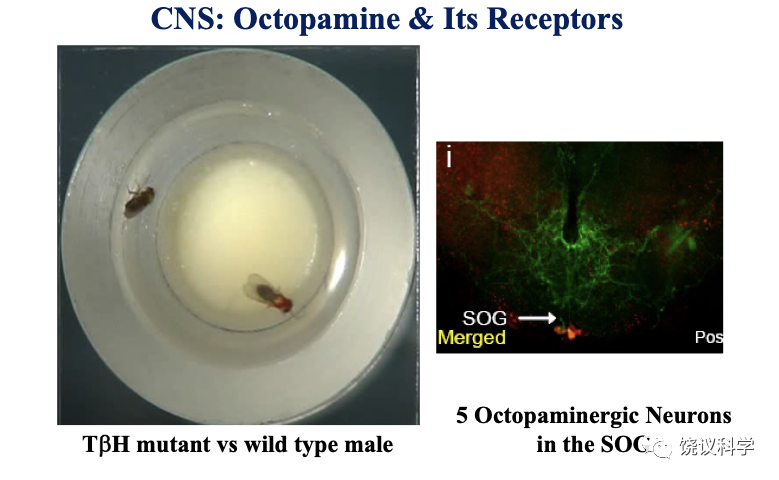
周传的第二篇论文有几位作者,但后面的也只是提供基因突变的果蝇品系,所以全部实验也都是他一个人做的。他发现雄果蝇求偶被拒绝后如何适应的分子机理。他发现鱆胺及其受体之一(OAMB)对求偶被拒后的适应很重要。如果这些分子减少,雄蝇被拒绝后不停止求偶,继续孜孜不倦地追求雌蝇(周传等,J Neurosci,2012)。
除这两篇原始论文外,周传还发表了一篇以他为通讯作者的评论。
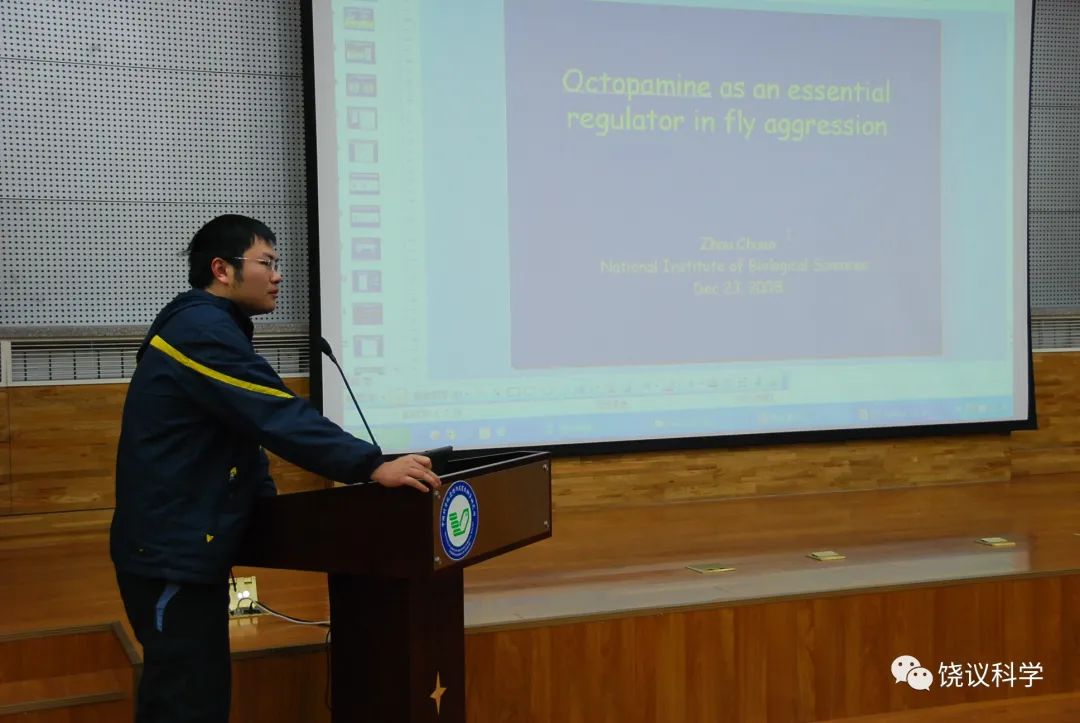
2008年,周传在中国科学院遗传发育研究所交流自己的研究工作
他还有一篇很好玩的文章,一直没有发表。他研究了酒精对果蝇打架行为的影响。他以引用“葡萄美酒夜光杯”开始。
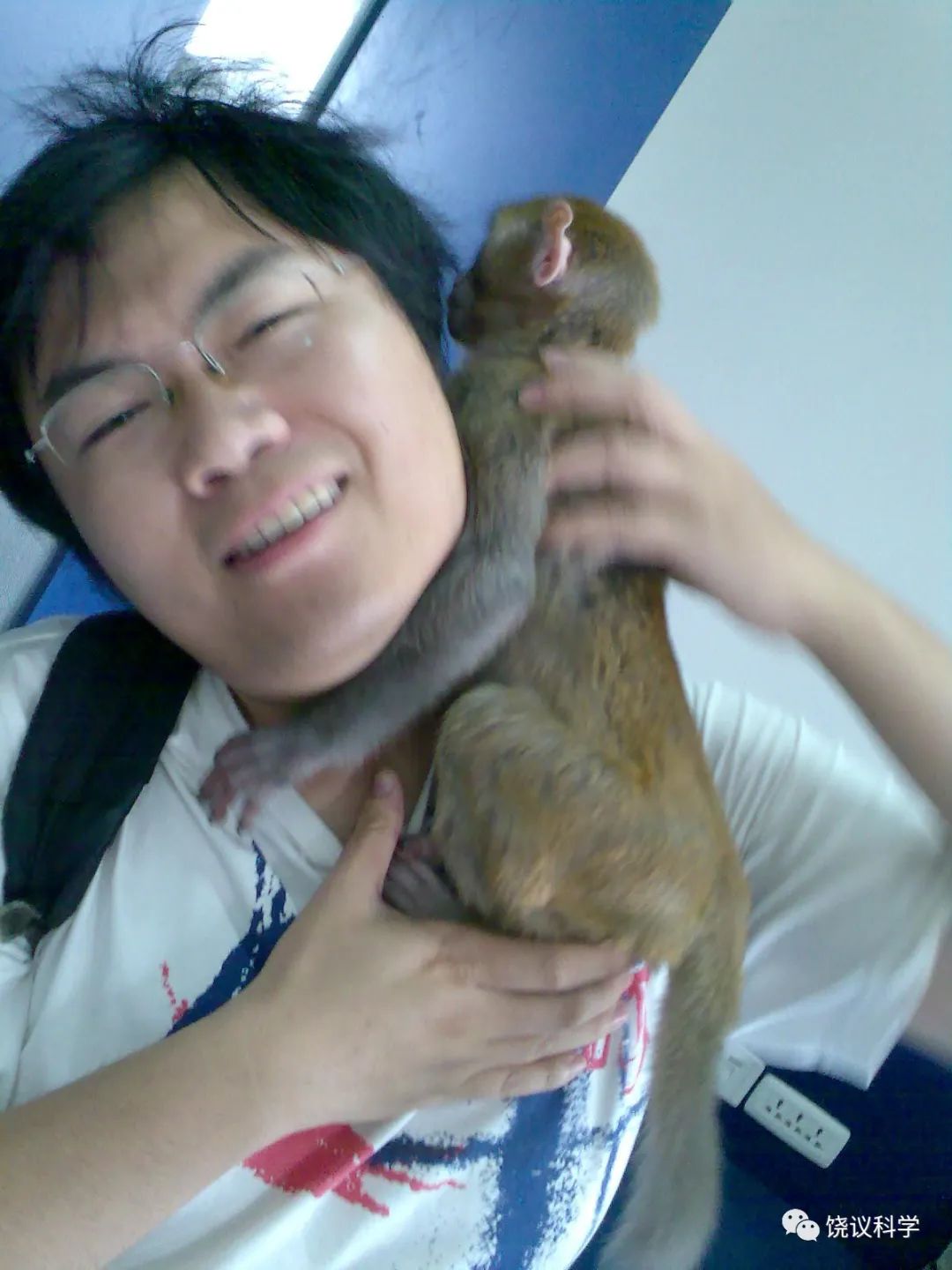
周传在昆明参加暑期班的业余活动
显然,科学研究对于周传来说,既有意义,也很好玩。
我给他的推荐信中写道:在没有导师在的情况下,只有高度独立、特别有创造性、自律性的学生才能成功…经历了周传这样的学生,才坚定了我全职回国的信心。
周传也喜欢教学。2009年,张翼、周传、李冰峰同学曾以我的名义开“基因与行为”的课程。他们把课程开得比较难,要求选课学生每周读五篇英文原始研究论文,而且要给每一篇论文写一到两页的评论。吓坏了一大批本科生和研究生,顺带也把我的名声在北大生科院的本科生里面搞得相当残酷。一位本科在北大选修过这门课,后来在美国读研究生获博士学位的学生回忆:
“我选过这门课。当时要求学生每周读五篇原始研究论文。 难的是每篇都要写一两页的评论。相比之下,我在美国选类似的研究生课要求的是五篇中任选一篇写评论。这是我选过的课业负担最重的,当时每周有一半的课余时间都在写这门课的作业,当然这门课也系统地训练了我读研究论文的方法。当时北大有选课学生少于5人不能开课的规定,第二周的时候因为人太少差点开不了课。
后来我读研究生开始当助教以后回忆起来,觉得当时周传作为研究生(张翼作为本科生),在做自己的课题之余,需要从头开始备这门课,每周的阅读量是巨大的,我非常佩服。”
后来好像只有六、七人从头到尾学完了这门课,曾有一位最后无法完成作业,自己主动提出得零分。
北大清华的本科生研究生可以开出比美国名牌大学研究生院还难的、对学生大有帮助的课程,让我们对未来看到了希望、增强了信心。
周传在国内读研究生期间,经常参加国际学术活动。2006年,研二的他到香港参加“分子和细胞神经生物学Gordon会议”。2008年,他到美国冷泉港实验室参加“分子神经科学高级技术”暑期班。2009年,他参加冷泉港“果蝇神经生物学会议”,并交流自己的原始研究,也顺带找博士后的实验室。

2009年,周传和张翼在美国冷泉港开会后从纽约回程,停芝加哥碰巧我同机回国
2009年,周传获北生所优秀研究生奖,同年获全国生物优秀研究生竞争的首届吴瑞奖。

周传获第一届吴瑞奖学金
周传很幽默、能团结人,调动实验室氛围、凝集同学。我实验室前期几年很多活动,也经常是周传发起,实验室因而好玩。他回国后,有时也发起我实验室的活动。
李冰峰同学回忆:
“周传的志趣高雅,喜欢书法、旅游,尤其喜欢古典音乐,尽管拉小提琴的水平一般,但对古典音乐的赏鉴却很有品味,他经常可以非常明确的说出一段古典音乐的名字、作者、指挥、演奏者和版本,并且有着挑剔的审美偏好,比如贝多芬第九交响乐,他最推崇卡拉扬1963年版本的——尽管伯恩斯坦1989年的版本也许更知名。
他也很喜欢和人讨论科学,同样很有品味,能够从历史的角度出发去思考问题,从而对别人的工作言简意赅的做出到位的评价,最喜欢的口头禅是insight(洞见)和trivial(微不足道)。
我认为研究神经的,很难不对心理学和社会学感兴趣;我和他居然不约而同的都看了很多这两门学科的“闲书”,有许多共同的话题。
和周传共事的那段时光,我最喜欢的事情之一就是和他两个人在古典乐的伴奏下,通宵的讨论学术问题,或者说是智识问题。人生来孤独,能遇此知己,三生有幸。”
2010年从我实验室毕业后,周传去美国HHMI的Janelia做博士后。在Bruce Baker实验室研究果蝇求偶行为,发表三篇论文,并为其中一篇原始研究论文的通讯作者。

在美国做博士后期间的周传

周传在美国与同学合影
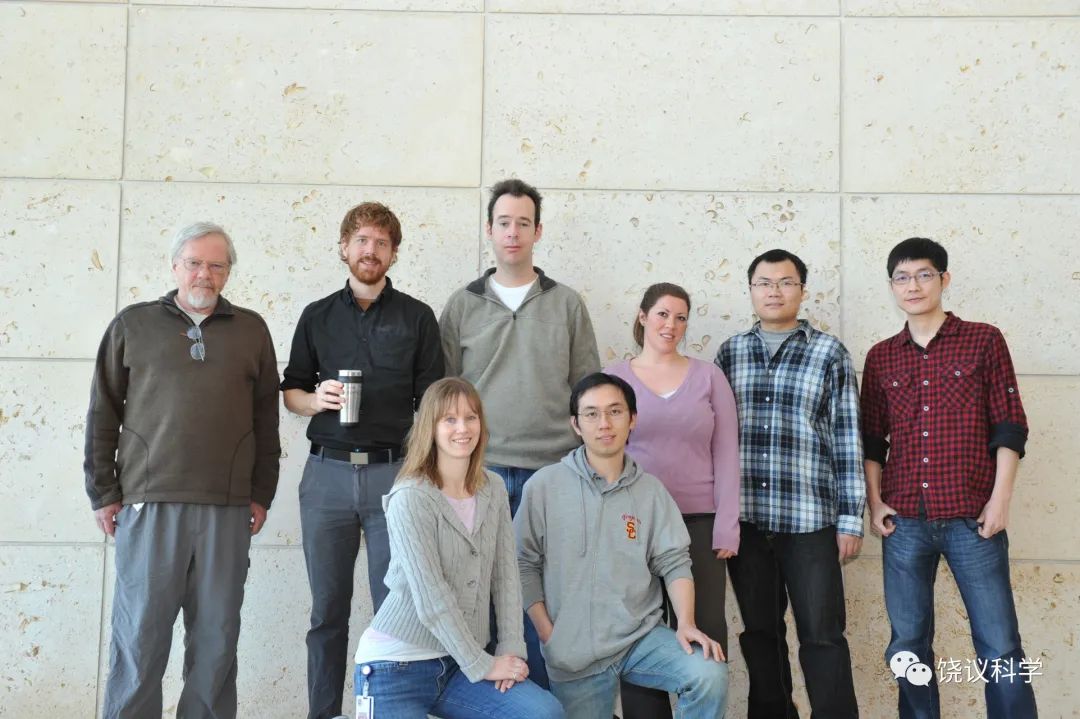
周传在美国做博士后期间的Baker实验室
在我实验室期间,周传结识一位北大本科生。她毕业后在美国读研究生,也把自己的第一篇论文发表在Nature Neuroscience。他们当时虽然分隔两地,却成功地喜结良缘。
2015年,周传通过中国科学院的引才计划到动物研究所任研究员,开始领导独立实验室。对于周传来说,独立很容易,因为他在我实验室和Baker实验室都很有独创能力,不依赖老师。

中国科学院动物研究所周传实验室
回国后,周传很快决定不仅做果蝇、也开始研究蚊子,用现代分子生物学和遗传学研究蚊子。2016年,他获得国家优秀青年科学基金。2018年,周传获科学院率先行动的百人计划。
然而,正在他的事业扬帆起航的时候,周传被诊断患病。
因为疾病的预后不佳、副作用大,周传决定不治疗,以便能够拥有更多“健康”的时间。
在患病期间,他坚持进行科学研究。双目失明后,不得不经历17个小时的手术治疗。但他继续指导实验室的研究,与学生交流,直至完全不可能。有时需要妻子和母亲记录。在他病重后,他领导实验室居然发表了一篇原始研究论文(Wu et al., 2020)、该学生获得博士学位。周传实验室还有两篇在投稿中(Wang et al.; Ma et al.)。
周传对科学有高度的热情,对研究工作有坚韧的意志。
周传的妻子,学业未完期间与周传分居两地。但无论周传是健康、还是患病,一直坚持对周传的关爱和支持。而在周传患病后一直守护在旁,令人感动。
他们是北大、清华可以引以为自豪的有理想、有情操的学生。他们预示着我们国家未来后继有人的希望。
2022年2月13日

清华大学2001级一班和北京生命科学研究所的同学悼念周传
Chuan Zhou, Yong Rao, Yi Rao (2008). The Neurotransmitter Octopamine is Essential for Aggression in Drosophila. Nature Neuroscience 11:1059-67
Chuan Zhou, Hai Huang, Susy M. Kim, Hsuanwen Lin, Xianglan Meng, Kyung-An Han, Ann-Shyn Chiang, Jing W. Wang, Renjie Jiao, and Yi Rao (2012). Molecular Genetic Analysis of Sexual Rejection: Roles of Octopamine and Its Receptor OAMB in Drosophila Courtship Conditioning. Journal of Neuroscience 32:14281-14287.
Xinhua Liang, Yi Rao and Chuan Zhou# (2014). The Neuronal Basis of How Sexual Experience Modulates Male Aggression. National Science Review 1:473-474 (#corresponding author)
Alexander G. Vaughan, Chuan Zhou, Devanand S. Manoli, Bruce S. Baker (2014). Neural Pathways for the Detection and Discrimination of Conspecific Song in D. melanogaster. Current Biology 24:1039–1049
Chuan Zhou, Carmen C. Robinett, Geoffrey W. Meissner, and Bruce S. Baker (2014). Central Brain Neurons Expressing doublesex Regulate Female Receptivity in Drosophila. Neuron 83:149-63.
Chuan Zhou#, Romain Franconville, Alexander G. Vaughan, Vivek Jayaraman and Bruce Baker# (2015). Central Neural Circuitry Mediating Courtship Song Perception in Male Drosophila. Elife 4:e08477 (#corresponding author).
Fengming Wu, Bowen Deng, Na Xiao, Tao Wang, Yining Li, Rencong Wang, Kai Shi, Dong-Gen Luo, Yi Rao and Chuan Zhou (2020). A neuropeptide regulates fighting behavior in Drosophila melanogaster. Elife 9:e54229. Doi:10.7554/elife.54229.
Wang T, Jing BY, Deng BW, Shi K, Li J, Ma BX, Wu FM#, Chuan Zhou#. Drosulfakinin signaling modulates female sexual receptivity in Drosophila. (under review) (#corresponding author)
Ma BX, Wang RC, Deng BW, Liu YH, Wang T, Wu FM#, Chuan Zhou#. Serotonin signal modulates female sexual receptivity in Drosophila. (under review) (#corresponding author)

饶实验室哀悼周传
以下是我保存的周传2009年写的没有修改的草稿
Fighting drunk flies
The models of ethanol intoxication and tolerance in Drosophila have been established and the genetic mechanisms of that revealed recently. Locomotion or loss of body control as behavioral output has allowed rapid and reliable mutant characterization and facilitated mechanistic studies, whereas on the other hand, disadvantages are manifested by the inability of mimicking the repertoire of complex behaviors elicited or altered by alcohol in mammals and humans. One of the long noticed behavioral traits that are thought to be tightly and causally linked to alcoholism is aggression. Our ancestors had learned to rouse the aggressiveness of warriors with a cup of wine before they went out for a battle (Fig. 1). However, the destructive effect caused by alcoholism is also without doubt: 25% of the violent crimes have been thought to be committed by individuals of alcohol abuse In the USA. In spite of the importance of alcohol-aggression relationship, little is known about the mechanism with the exception of a few studies in mammals pointing out the involvement of dopamine and serotonin pathway.
We thus sought to establish the model of alcohol heightened aggression in Drosophila. Flies aged for 5 days in a group of 10 were exposed to either humidified air, ethanol vapor produced by diffusing air through a 95% alcohol solution (high level exposure), or a combination of the two (middle level exposure). The middle level exposure of ethanol vapor was achieved by mixing 45 flow units of air with 50 flow units of ethanol vapor. Interestingly, middle concentration of alcohol treatment could significantly increase the number of lunging, the most prominent fighting pattern in fruitfly fighting, and reduce the fighting latency (Fig. 2a, b). It should also worth noting that alcohol exposure of high concentration almost phenocopied that of middle concentration, which is a bit surprising because only low but not high dose of alcohol consumption is able to change aggression in mammals. There is a trend of increase in escalated fighting patterns which include holding, boxing and tussling after alcohol treatment, though not significantly (Fig. 2c). We also tested the effects of middle level alcohol exposure for different time courses. The results showed that 10 min is most effective to promote aggression, whereas 30 min of exposure is not able to significantly change the aggression indices, possibly due the sedation effect of enduring ethanol consumption (Fig. 3).
Hence our results suggest a potentially excellent model for studying the interaction between alcohol sensitization and aggression. It is still unclear that alcohol directly modulates the “aggression center” or indirectly effects on neurons which project excitatory or inhibitory afferents to aggression responsible neurons. It is also unknown whether the effect of alcohol on aggression is acute or long-lasting, or whether the chronic treatment of alcohol is as effective. It should be interesting to investigate whether genes implicated in alcohol intoxication are involved in alcohol heightened aggression or not. For example, CREB pathway has been proven to be a key regulator in behavioral plasticity of alcohol intoxication and in social experience regulated sleep. Since we have known that social experience also greatly influences aggression, it would be interesting to ask that whether CREB also play a role in modulation of aggression by alcohol or isolation (grouping) effects, and in what extent the repertoire of genes regulate alcohol heightened aggression and isolation induced aggression is the same or different. The power of fly genetics should allow us to identify the genes and biochemical pathways and neural circuits underlying this complex behavioral interaction.
